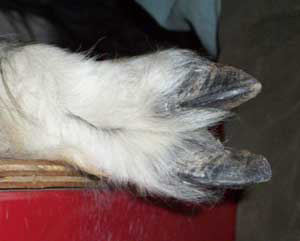 |
|
|
|
|
|
|
|
|
|
|
Shearing DayThanks to everyone who came out and helped at our May 2005 shearing!We sheared more than 20 Alpaca all in one day and had a lot of fun too. The first step to shearing is to blow out the animals coat. This removes some of the dust and light debris that they get into their fleece by rolling. No matter how much you blow, there is plenty of dirt left! We used a shearing table this year which was a bit easier on our backs and helped us keep the stress level down for the animals. Other years we have created a padded area on the barn floor, tied the Paca's legs and then tipped the animal gently onto the ground. The shearing table tilts into a vertical position with the pad top open so that you can walk the animal in between the table top and the pad, then you close the padded top wedging the animal in, then tip the table horizontal sweeping the Alpaca off their feet! Then we tie their legs and stretch them out a bit so they don't kick. Once they are secure and the table is flat, the padded top is raised so you can shear. We keep people around the Paca to help keep them calm, safe and secure. Especially at their head where we talk to them reassuringly. Most of the Alpaca's take this process fairly well, some are vocal and complain through the whole process. Alpacas are sheared and fleece collected up by areas of their body. Keeping the blanket separate from the neck and legs is the first quality sort on the fiber to keep the softer and coarser fibers separate. The blanket it typically the cleanest and highest quality fiber from the animal and is what is submitted for raw fiber shows. The pictures here are of the first side of the blanket being sheared. You can see that it hangs together and is rolled off the animal towards it's back as each shearing pass is made. One side of the animal is sheared. Then their leg ties are slid to the other end of the bars while the animal is rolled over their back on the table so we can shear the other side. Shearing requires a steady hand and not to go too fast or too slow. If you go too fast, you may not shear close enough to the skin and end up with a lot of short second cuts and wasted fiber. If you shear too close you could cut your animal's skin. Go to slow and your razor will heat up to much to handle and the Paca can get stressed from being in this process too long. It is a hard balance to manage. Shearing is exhausting for the humans and animals both, so having lots of help makes things go easier for everyone. As fleece is sheared folks gather it off the table and into labeled bags so that we know which animal it came off of, and whether it is blanket, neck or leg fiber. Skirting can be done at this point if you have enough space and extra hands. Skirting involves shaking dirt out of the fiber, picking off second cuts, and removing hairy portions (legs usually) and any vegetation so that the fleece is ready for processing. After skirting it goes back into a bag with a label including the animal's name, amount of fleece in weight, and blanket, neck, or leg fiber. When shearing is all done they look so small! All the other Pacas have to come running and see the newly sheared animal as they are returned to their pen. Pacas are curious creatures. Skirted fiber can be hand processed or sent to a mill for processing and can become anything from batts or rovings ready for hand spinning, to yarn in many different weights and colors, to sox, scarves and sweaters. If you would like to see and feel some beautiful Alpaca fleece yarn and clothing, come see our store!
Alpacas have two toes with a toenail. The bottom of their feet is padded, kind of like a cat's paw, only in one big pad. The bottom of the toenail is trimmed where it grows out past the bottom pad of their foot.
|
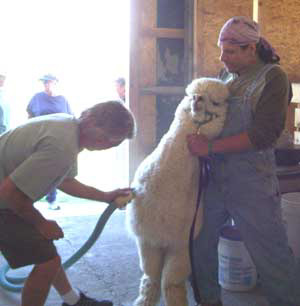
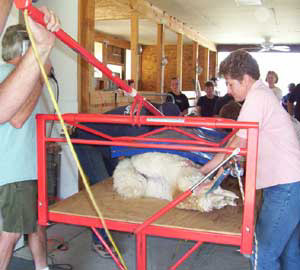
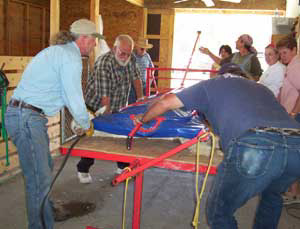
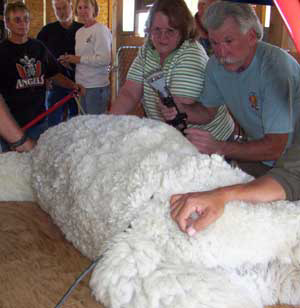

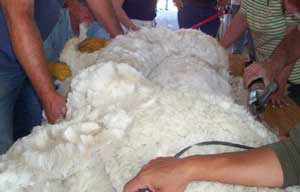
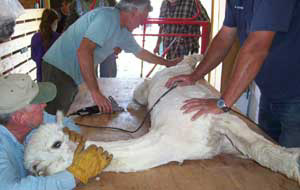
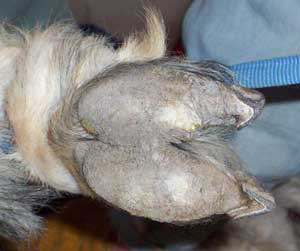
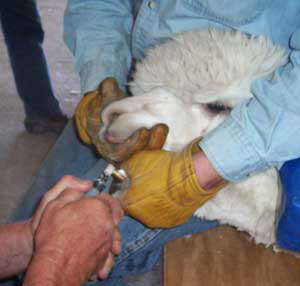
|
|
|
|
© 2005 Waugh Mountain Alpacas. All Rights Reserved. | Questions? waughmtnalpacas@frontiernet.net | 928-339-4244 This web site designed and maintained by Cyberian Frontier |
